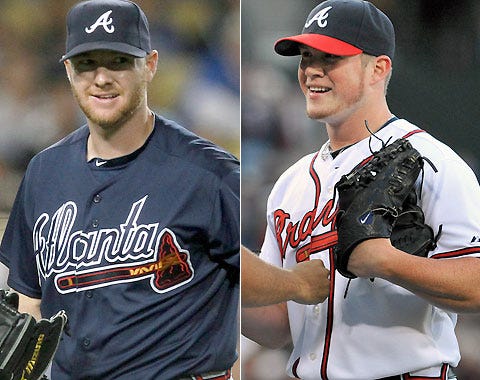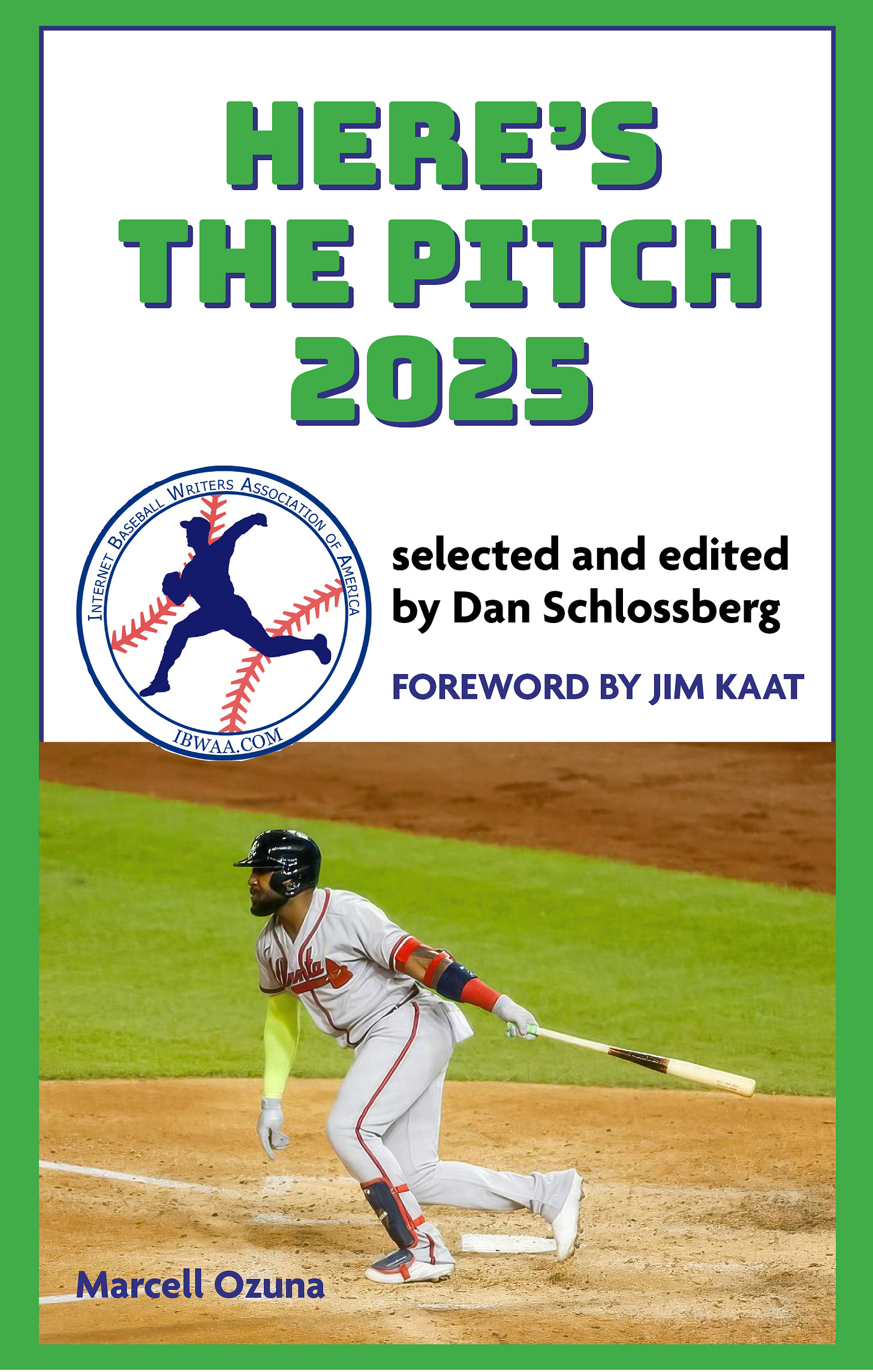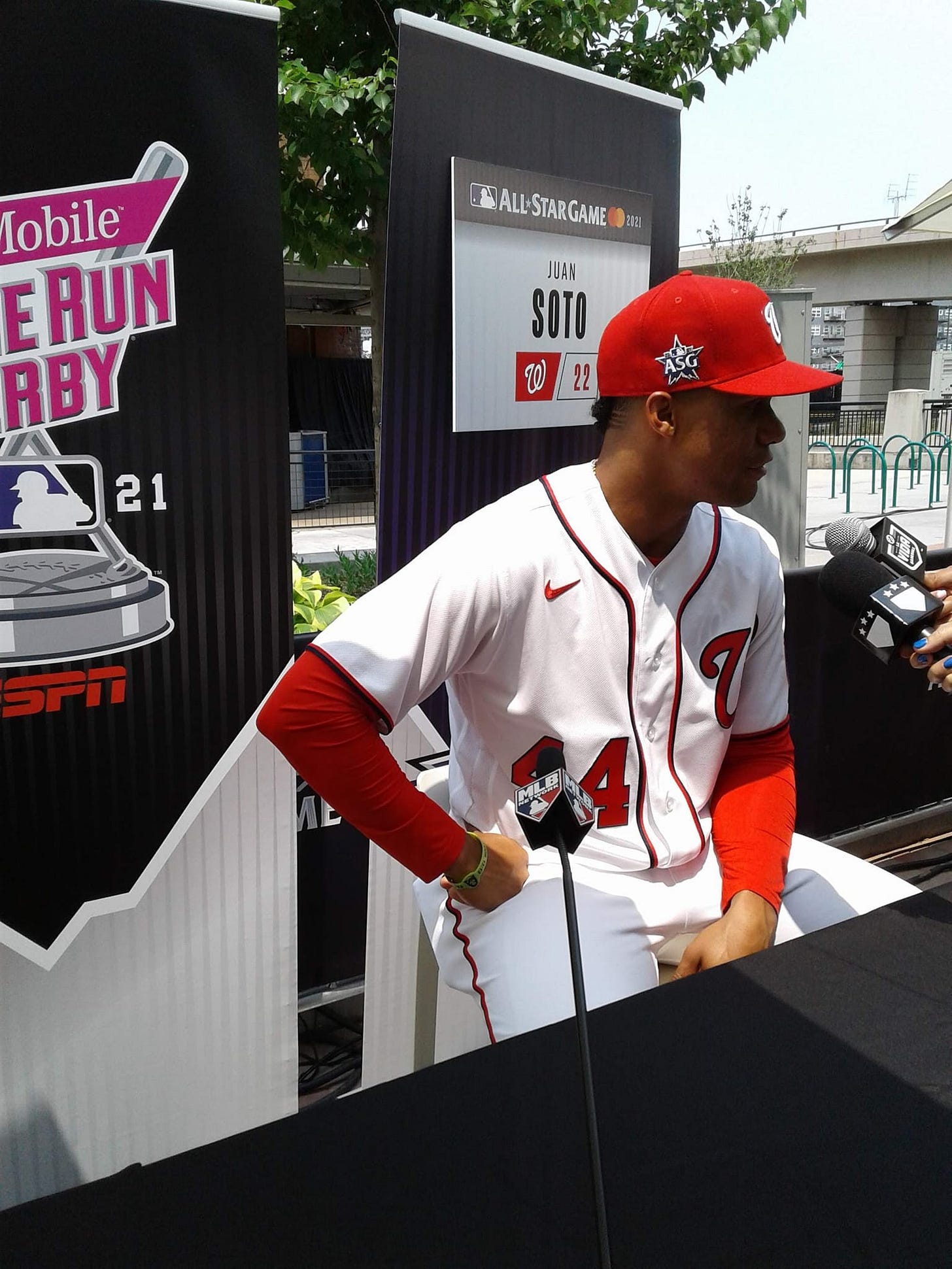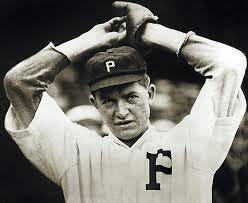IBWAA members love to write about baseball. So much so, we've decided to create our own newsletter about it! Subscribe to Here's the Pitch to expand your love of baseball, discover new voices, and support independent writing. Original content six days a week, straight to your inbox and straight from the hearts of baseball fans.
OPENING DAY SPECIAL: $5 OFF HERE’S THE PITCH 2025
Written exclusively by IBWAA members
Selected and edited by Dan Schlossberg
This first annual collection of 35 great baseball stories, analysis, memories, and trivia for baseball fanatics (including you) is available now for the special Opening Day price of $20 at http://www.actasports.com.
But subscribers to this newsletter get 10% off on one copy or 20% off on two or more copies by calling 800-397-2282, talking to a real live person (not an AI robot), and ordering directly from publisher Greg Pierce. Offer good only through April 30, 2025!
Pregame Pepper
Did you know…
Anthony Rendon is bidding to become the biggest free-agent bust of all time. He delivered no return on investment for the seven-year, $245 million contract he signed after the 2019 season, playing just 200 games for the Angels in four seasons thanks to injuries to his hip, hamstring, groin, wrist, shin, and more. Now his ailing hip will probably keep him sidelined for all of 2025 . . .
Who’s more desperate: the Rangers for signing Patrick Corbin or the Braves for signing Craig Kimbrel? . . .
Another Texas team with pitching troubles, the Astros have shut down Luis Garcia again. He last pitched May 1, 2023, then needed Tommy John surgery later that month. In camp this year, he pitched 9 2/3 innings . . .. . .
True to his previous form, Atlanta GM Alex Anthopoulos signed three free veteran free agents this week: Kimbrel, catcher James McCann, and outfielder Alex Verdugo — all of whom could be key pieces in October . . .
The Braves also traded reliever Angel Perdomo to the Angels, giving Ron Washington’s team their first actual Angel.
Leading Off
What Is Greatness? And Where Does Soto Fit?
By Paul Semendinger
The other day, I was having a spirited discussion with a reader on my Yankees site (Start Spreading the News).
We were trying to determine what defines a great player.
In short, the reader claimed that Juan Soto (now a former Yankee) was not a great player in 2024. I disagreed. Juan Soto is, as I see it, a great player. And he was a great player in 2024. Absolutely.
I shared that Juan Soto put up 7.9 WAR in 2024. That was 6th best in the MLB last year. That seems to indicate a certain level of greatness.
A 7.9 WAR is a very impressive total. I compared that total to some players, often considered Yankees greats. Across his entire career, Derek Jeter exceeded 7.9 WAR exactly one time, and just barely (8.0 in 1999). Of note, Don Mattingly, Yogi Berra, Roger Maris, and Paul O'Neill, among many others, never had a 7.9 WAR season. In addition, Reggie Jackson and Dave Winfield exceeded 7.9 WAR in a season only once each across their entire careers.
The argument against Soto is that he is a one-dimensional player. Soto, it was said, is a great hitter, but he's not great with any other skill. The reader's point was that a player cannot be considered great if he is not an all-around great player. A great hitter alone, it was argued, is not a great player. In order to be great, a player must also be an excellent fielder, runner, and such. It's an interesting take and one I don't necessarily agree with.
Oftentimes, when baseball fans begin to discuss and debate all-around greatness compared to just one are of greatness, two players, rivals throughout most of their careers, are brought up: Ted Williams (a great hitter who was, at best, indifferent as a fielder) and Joe DiMaggio (who exemplified all-around greatness).
One of the longest-running debates in baseball centers on which of those two was actually the better player, DiMaggio or Williams.
Of course, a case can be made for both, but I decided to compare them again.
Joe DiMaggio played from 1936 through 1951, minus the seasons where he had military duty. Ted Williams' career lasted from 1939 through 1960, again minus his military duty. Since he had the longer career, Williams exceeds DiMaggio in virtually every offensive counting stat and it's not even close. Williams also betters DiMaggio in batting average (.344 to .325), on-base percentage (.482 to .398), and slugging percentage (.634 to .579). When looking at these numbers, it is difficult (if not impossible) to argue that DiMaggio was the better player. Ted Williams had the more impressive career, or so it seems.
Joe DiMaggio, of course has a few arguments in his favor. Even with a shorter career, he won more MVP awards. DiMaggio was also the greatest player on a team that continually won the pennant, and most often the World Series.
DiMaggio appeared in 10 World Series, Williams, just one. DiMaggio's team won 9 World Series, Williams was never on a World Series winner. It would be a challenge to argue against DiMaggio's record of success.
And, maybe, the debate can never be truly reconciled.
But I decided to give it a try by looking only at the seasons their careers over-lapped (1939 to 1951) to see if there is a way to determine which of the two players was better in that period.
Over that span, Williams was, again, by far, the more dominant hitter. To use traditional counting stats, he hit .347/323/1261 to DiMaggio's .322/254/1105. Williams also scored more runs and hit more doubles. He also played in more games in that span than DiMaggio (1,421 to 1,302). Williams exceeds DiMaggio in OBP (.484 to .404) and SLG (.633 to .567). In that period, Ted Williams' OPS+ was 190 compared to DiMaggio's 159. Looking at those numbers, I find it challenging to find a way to argue for DiMaggio over Williams. Again, they were both great, but Williams had the vastly superior counting stats.
I decided to then compare MVP votes over that same period. I wondered which of the two players was considered, by the writers of the time, more "valuable" overall from 1939 to 1951, and what I found was somewhat shocking. I thought this would be an area where DiMaggio greatly exceeded Williams, but that was not the case. From 1939 to 1951, Joe DiMaggio finished in the top-ten in MVP votes seven times. Ted Williams did as well. In that regard they were equal. DiMaggio won his three MVPs in that period, slightly more than Williams' two awards, but then I found something surprising. DiMaggio was a top-three vote getter five times, Williams finished that high six times. Even in this, Williams exceeded the great DiMaggio.
I know it's a flawed statistic, but until we get a better one, a researcher must look to Wins Above Replacement (WAR) to at least see what those numbers can tell us. WAR is supposed to account for factors beyond simply hitting stats. WAR also isn't kind to DiMaggio in his contest against Ted Williams - and it's not even close. From 1939 to 1951, Ted Williams accumulated 82.5 WAR. Joe D. accumulated 60.2. That difference is vast.
All of this seems to indicate that Ted Williams was, in fact, the better player. DiMaggio was the world champion, but statistically, I cannot find a way to argue that he was a better player than Teddy Ballgame. They were both great, but Ted Williams was greater.
Paul Semendinger, Ed.D., is a retired school principal who is gearing up for the new baseball season where he still pitches in an over-35 wood bat baseball league. Paul still believes the Yankees should give him a look. The Yankees need a starting pitcher (or two) and Paul can give them lots of innings.
Cleaning Up
The Rise and Fall of Craig Kimbrel
By Dan Schlossberg
Craig Kimbrel leads the Braves in lifetime saves even though he hasn't been with the team since 2014. The diminutive right-handed closer collected 186 saves in his first five years with the club, leading the majors in saves between 2011 and 2014 as arguably the most dominant reliever of his time . . .
Kimbrel has a career ERA of 2.59, stands fifth on the all-time saves list, and averages 14.6 strikeouts per nine innings.

Though he turns 37 in May, he’s just seven saves behind Kenley Jansen, who will close for the Angels this year, and 38 away from third-place Lee Smith, a Hall of Famer.
But he’s been erratic if not worse in recent years, so who knows what he can provide this year.
His original team, the Atlanta Braves, wants to find out. They signed him to a minor-league contract this week with the promise of a $2 million payoff if he reaches the varsity.
He’ll spend some time conditioning himself before reporting to Triple-A Gwinnett.
That’s quite a comedown for the Huntsville native who began his career as National League Rookie of the Year in 2010.
Atlanta’s bullpen took a hit when it was reported that Joe Jiménez will miss the entire season after knee surgery. That leaves star closer Raisel Iglesias with a supporting cast of Dylan Lee, Pierce Johnson, Aaron Bummer, and either Ian Anderson or Grant Holmes – depending upon who’s the lowest-ranked starter when Spencer Strider returns in mid-April.
Daysbel Hernández, Hector Neris, Jake Diekman, and Buck Farmer are also in the bullpen mix.
According to RosterResource, the Braves have a $230MM competitive balance tax number, some $11MM shy of the base $241 million threshold. They have opted to sign many pitchers to minor-league deals and hope that a handful of them work out.
Kimbrel, who still could find himself in Cooperstown, is the biggest name on the list.
From 2010 to 2014, he tossed 289 innings for Atlanta, yielding 1.43 earned runs per nine. His 9.6% walk rate was a high but he had a 42.2% strikeout rate over that span.
Annointed Atlanta’s closer, he collected 185 saves in a four-year stretch from 2011 to 2014, then continued to produce similar results with the Padres and Red Sox.
A free agent after 2018, Boston gave him a $17.9MM qualifying offer. Kimbrel rejected that offer – meaning any club that signed him would forfeit at least one draft pick.
That seemed to have a big dragon his market, as he remained unsigned until after the summer draft, then held in June. He eventually inked a three-year, $43MM deal with the Cubs in June of 2019. Two ugly seasons followed, though he rebounded in the 2021 campaign.
He made 39 appearances for the Cubs that year with a microscopic 0.49 ERA. His 9.5% walk rate was still above average but a massive improvement over the previous two years. He also punched out 46.7% of batters faced. Traded crosstown to the White Sox at the deadline, Kimbrel couldn’t keep up his mastery. His ERA over the rest of that season was 5.09.
After picking up his $16 million club option, the Sox swapped Kimbrel to the Dodgers in 2022 – the second time he was moved just before Opening Day. He had a decent year but faded late, losing a spot on the postseason roster.
Going into 2023, the Phils gave him a one-year, $10 million deal, which paid instant dividends. Kimbrel posted a 3.26 ERA over 71 appearances, with a 33.8% strikeout rate and 10.1% walk rate.
Free again, he signed with Baltimore (one year, $13 million) with the Orioles but hit bottom ion his return to the American League. He had a 5.33 ERA for Baltimore, striking out 31.5% of batters but also giving out walks 13.4% of the time. He was released in September.
Kimbrel, who still resembles a human DeLorean when he peers in for the catcher’s sign, hopes to catch Smith in career saves but that would only happen if Iglesias is injured or traded (unlikely). But the incumbent closer is entering the walk year of his contract and could become a free agent this fall.
Kimbrel is not getting any younger but he’s pitching close to home for a team where he had previous success. Those factors won’t help him recapture his 50-save form of 2013 but could make him a valuable late-inning man anyway. All he needs is a chance.
Former AP sportswriter Dan Schlossberg of Fair Lawn, NJ has covered baseball for more than half-a-century. The author of 42 books, including two Hank Aaron biographies, he’s promoting Here’s the Pitch 2025 and the forthcoming 2025 edition of The New Baseball Bible, due June 3. His email is ballauthor@gmail.com.
Timeless Trivia: Grover Cleveland Alexander Set Rookie Standards No One Can Copy
In a spirited discussion over the greatest rookie seasons, there are many choices:
Fred Lynn was the only man to win the Rookie of the Year and MVP trophies in the same season — until Ichiro Suzuki did it nearly 30 years later . . .
Fernando Valenzuela was the only pitcher to be Rookie of the Year and Cy Young Award winner in the same season . . .
The most prolific rookie sluggers were Mark McGwire (49 home runs), Aaron Judge (52), and Pete Alonso (53) . . .
Dick Allen, then known as Richie, had a fabulous first season with the Philadelphia Phillies in 1964 . . .
So did Jim Rice, who just happened to share the same Red Sox clubhouse with Fred Lynn . . .
Ted Williams was pretty spectacular in 1939 too . . .
But for first impressions, no one could beat Grover Cleveland Alexander . . .
He stamped himself as a future Hall of Famer by winning 28 games for the 1911 Phillies, making 37 starts and 11 relief appearances, throwing 367 innings, and averaging seven hits allowed per every nine. He threw seven shutouts, allowing 0.1 home runs per nine innings (granted, it was the Dead Ball Era) . . .
The Nebraska-born right-hander also had 31 complete games — the first of six seasons he had more than 30 . . .
His team finished only fourth, 19.5 games behind, with a 79-73 record . . .
During a career that lasted exactly 20 years, Old Pete’s annual average was a 20-11 record, 2.56 ERA, and 23 complete games. He threw 90 shutouts, a National League mark bettered only by Walter Johnson’s 110 . . .
Had the Rookie of the Year Award existed in 1911, he would have been a shoo-in . . .
The award was launched in 1947, just in time to catch a guy named Jackie Robinson.
Know Your Editors
HERE’S THE PITCH is published daily except Sundays and holidays. Benjamin Chase [gopherben@gmail.com] handles the Monday issue with Dan Freedman [dfreedman@lionsgate.com] editing Tuesday and Jeff Kallman [easyace1955@outlook.com] at the helm Wednesday and Thursday. Original editor Dan Schlossberg [ballauthor@gmail.com], does the weekend editions on Friday and Saturday. Former editor Elizabeth Muratore [nymfan97@gmail.com] is now co-director [with Benjamin Chase and Jonathan Becker] of the Internet Baseball Writers Association of America, which publishes this newsletter and the annual ACTA book of the same name. Readers are encouraged to contribute comments, articles, and letters to the editor. HtP reserves the right to edit for brevity, clarity, and good taste.






